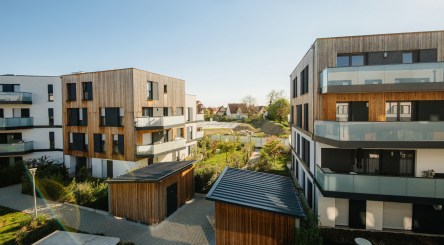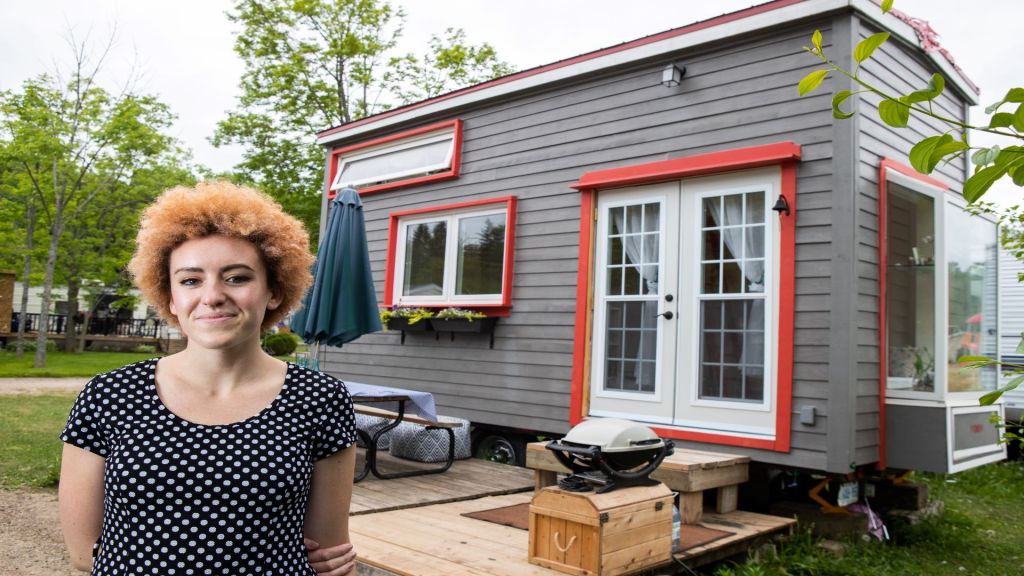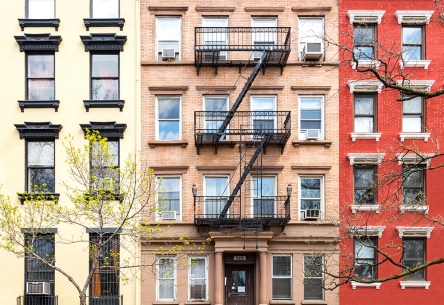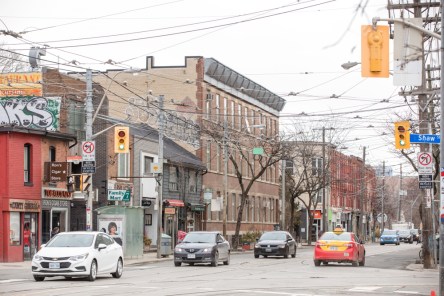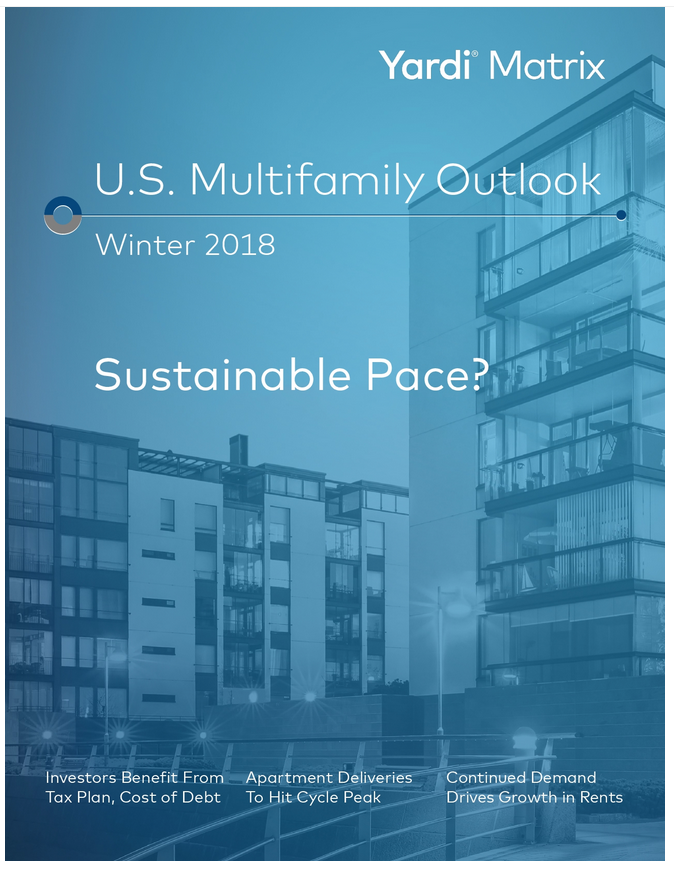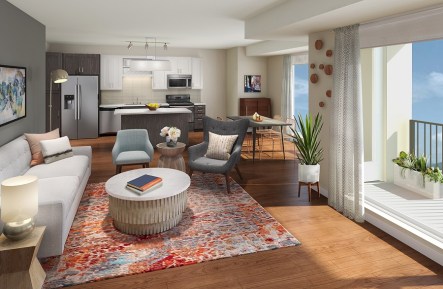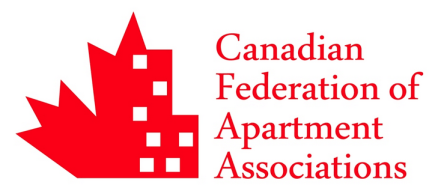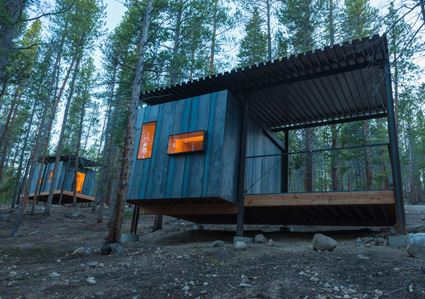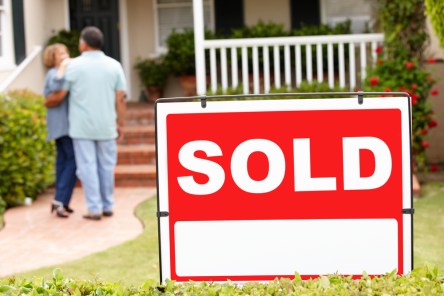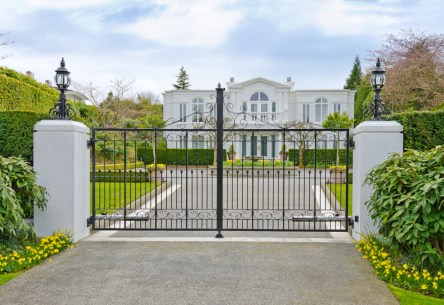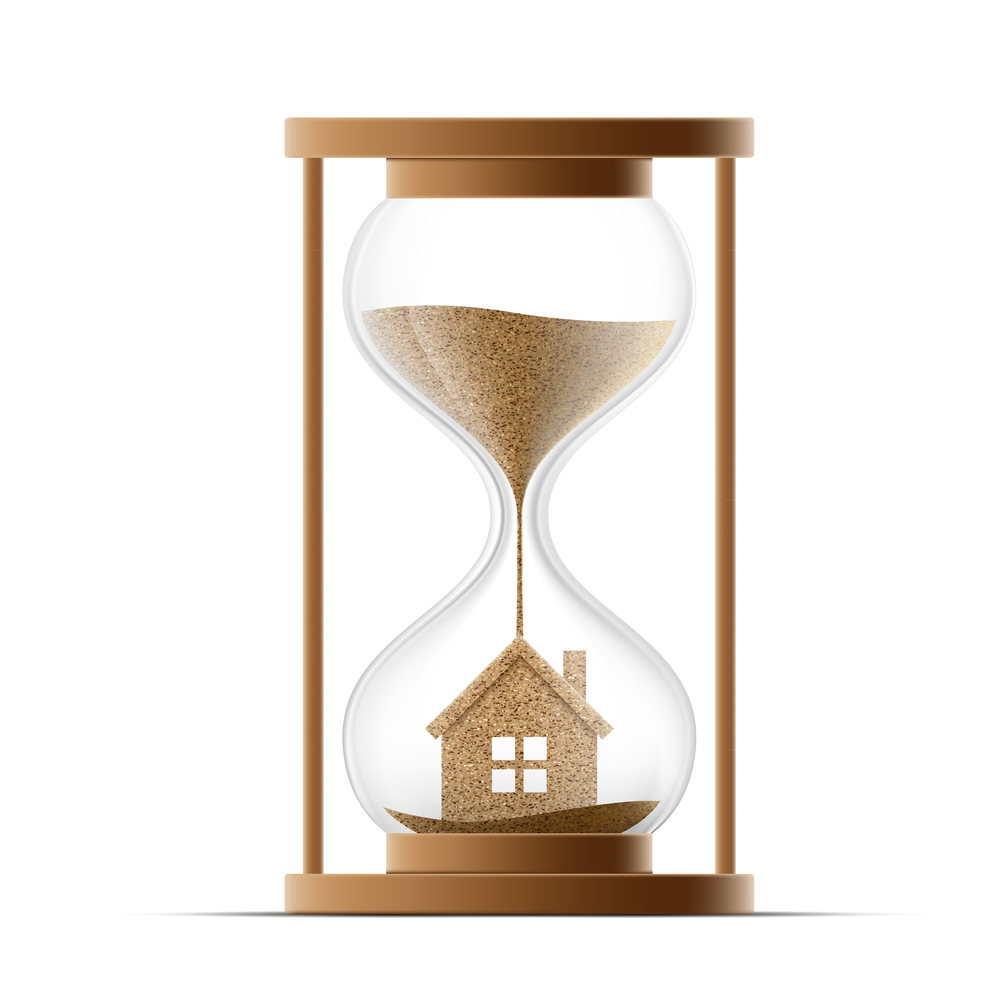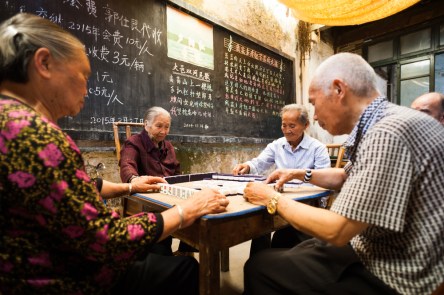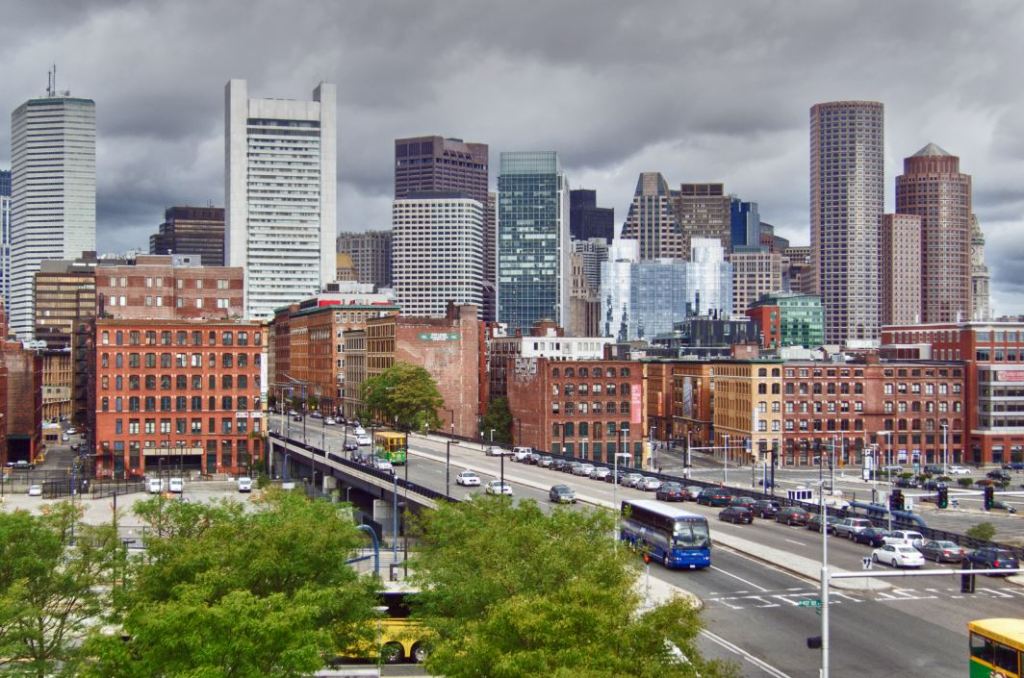Investors have set their sights on suburban and tertiary markets. Lenders are responding favorably to the trend. While banks will continue to keep one foot planted in major metros, many are following their trusted relationships to less familiar terrain outside of city limits. Sleepy secondary markets are waking up The shift began as a trend prompted by the pandemic but has continued at a steady clip through the highs and lows of COVID-19. This is particularly true in cities where major employers have transitioned to remote and hybrid models. Many white collar industries such as technology, consulting and legal have adapted more flexible work conditions. With zero or fewer days required for office attendance, employees have been exploring their housing options. Blake Hering, principal with Gantry Inc explains, “As these remote operating models adopted by many office users have taken root and grown following last year’s social distancing mandates, a generational shift valuing the lower cost of living, higher quality of life, and larger footprint domiciles available in secondary markets has clearly fueled the beginning of a new, robust cycle for regional markets outside the MSA domain.” Employees are venturing further from their workplace hubs to secondary and tertiary markets where their money likely goes farther: lesser-known markets may offer more square footage for their money and more outdoor space, housing trends that were revitalized during the pandemic. Lending follows the leader The migration is particularly evident in MSA markets such as Seattle, Wash., and Portland, Ore. in the Pacific Northwest. Investors are following demand to smaller markets such as Bend, Salem and Tacoma. “This shift is now rewarding experienced sponsors in what have become prioritized markets by offering access to a host of new lending sources that once only reserved their allocations for operators...
Tiny Homes
Essential housing
On the surface, tiny homes seem to address the needs of those who need the least. The affluent New Yorker seeking a COVID getaway near the beach, or a recent grad making a name for herself off the grid are the ideal images of tiny house inhabitants. But in (what we hope is) the wake of a pandemic, public health officials and city planners are seeing the value of tiny houses for those in need. The compact panacea This summer, the U.S. faces an interconnected web of high unemployment, a high cost of living near job hubs and seemingly unending wave of COVID-19 infection rates. Those who can are migrating from cities to less populated suburbs in search of space and peace. They’re often taking their remote work with them. But for more than half a million homeless people in the United States and 16.3 million unemployed, that’s not an option. City planners are turning to tiny houses to de-intensify shelter housing, bring people in off of the streets and offer affordable housing for those in need. Additionally, the compact units facilitate social distancing while offering access to private, outdoor space that isn’t readily available in multifamily and public housing. Long term, low-cost tiny houses provides a pathway to homeownership (and potentially, wealth-building equity) for marginalized communities. It took a pandemic to showcase the true value of tiny homes. Affordable housing and homeless services in America are permanently enhanced because of it. Tiny homes improve public health in major metros Seattle was one of the first cities in the US to feel the full force of the pandemic. The city’s vulnerable populations, the homeless and elderly, were the hardest hit. On April 20, Public Health Seattle & King County officials reported 112 COVID-19 infections amongst shelter occupants and staff. Later that month, The Multi-Service Center South shelter in San Francisco reported 96 guests and 10 staff tested positive. As the pandemic spread, major metropolitan reported high infection rates among vulnerable populations. Homeless shelters, traditionally arranged in barrack-style floorplans, did little to slow the spread of the virus. Major metros throughout the nation soon ditched conventional shelter arrangements to promote social distancing: they removed beds to lessen density, and converted hotels and public buildings into emergency shelters. These short-term solutions, however, highlight problems that won’t quickly fade from memory. Homeless shelters are underserved and overpacked. Low-Income Housing Institute’s (LIHI) tiny house villages stood out as a long-term solution. They facilitate public health procedures, foster a sense of safety and autonomy, and have proven to be more cost-effective than conventional shelters. LIHI operates 12 villages serving Seattle, Olympia and Tacoma. The newest community stands in Puget Sound, offering 400 houses that have helped more than 1,000 each year. Two more communities are in the works with at least 50 houses. Each community contains units with less than 100 square-feet. The tiny spaces offer more personal space and privacy than shelters. The houses permit residents to live and sleep more than six feet apart. On-site case managers provide the support residents need while facilitating a path towards permanent housing. The villages pay off for residents as well as city managers. The City of Seattle, for example, funds nine villages. The average cost of tiny house living is only $38 per night. That’s $18-$94 less per night than The City’s current housing options. The construction of the homes is also a cost saver for The City. Shelterforce organizes volunteers to build the homes. Much of the construction can take place off-site in volunteers’ yards when necessary. The free labor reduces home construction costs to $2,500 each. In dire straits, Shelterforce hires contractors who build the homes for $5,500 including labor and materials. In both cases, the per square-foot cost has proven to be more cost effective than conventional shelters. Be Loved Village, Asheville combats homelessness and affordability crisis Asheville has struggled with affordability...
NY Law’s Impact
Rent Control Results
Last year, New York state implemented new protections for residents of rent-stabilized and market-rate housing, including the conditions under which rent hikes and evictions are allowed. Affordable housing advocates saw the landmark Housing Stability and Tenant Protection Act of 2019 as vital to helping low-income people avoid homelessness in expensive markets such as New York City. Skeptics predicted it would backfire and reduce incentives to develop, invest in and manage rental housing. The law has been under siege in the courts from landlord interests who claim it violates the Constitution’s taking and due process provisions. One year into the new era, has either side been proven right? Obviously, a lot has changed in the New York rental market since the law was signed in June 2019. But in December of that year, before the COVID-19 pandemic took hold, the New York Times reported that evictions in the state dropped by 20% in the preceding six months. State and federal provisions put in place during COVID have further strengthened eviction protections for more than 1.5 million state residents not able to pay rent due to the pandemic. In April and May, rents in New York City actually went up year over year. The Times reported in June that “those looking to sign or renew leases in the last few months say that while some landlords are grudgingly offering short-term concessions, like a free month of rent, most are unwilling to budge on pre-pandemic pricing and, in some cases, are even increasing rents.” And how about rent payments? Yardi Matrix data collected in July revealed rent declines ranging from 0.8% to 1.6% in Brooklyn, Manhattan and Queens that month, while occupancy levels in the metro have been flat for several months. “With the vacancy rate where...
Real Estate Design
Pandemic Mitigation in Housing
Shelter in place practices have made an impact on every industry in America. Multitenant industrial and retailers grasp to make rent while grocers, tech, and delivery firms thrive. We naturally attach value to such changes. Real estate and its design, however, are neutral reflectors of social shifts. Like events before it, COVID-19 is the next big thing to change the face of housing. But first, let’s look back at other shifts that have changed the way that we live. We’ve seen this before – sort of Major social and economic events directly impact that way that we design and inhabit real estate. Following the wreckage of the Great Depression, President Franklin D. Roosevelt’s New Deal propelled the development of interstates and suburbs. Subdivisions sprang up, dispersing families into nuclear households. By the mid-1940s, middle class workers’ commutes prompted the addition of built-on garages. With the cheap suburban lots, greater car affordability, and adequate employment rates of the 1960s, many families opted for large houses with two-car garages. Fast forward to the economic prosperity of the 90s. Middle class and affluent Americans indulged in spacious homes with open floor plans. Multifamily construction boomed, answering demand from young adults who struck out on their own. Most formed their own households after graduation. In 2005, only 19% of college graduates lived with or moved back in with their parents, reports MarketWatch. The Great Recession ended lavish living for most Americans. Homeowners and investors struggled with mortgages, inundating the market with foreclosures. As the Great Recession dragged on, multitudes of seniors moved in with their adult kids. The number of recent graduates moving back into their parents’ homes jumped to 28% in 2016. The nuclear households of the 50s-90s began to disappear. Multigenerational housing reemerged and real estate changes followed soon after. Coming full circle to multigenerational housing with a twist Around 2012, multigenerational housing became the “new” trend in single family real estate. Though multigenerational households were the standard for thousands of years, modern multigen housing offered greater privacy. Finished basements with separate entries increased in popularity. Homes with two masters on the main floor thrived since they could support the homeowners as well as their aging parents. In price points that accommodated larger lots, young adults or in-laws lived in detached suites that shared mortgage and utilities costs. Young adults who would not or could not move in with family weathered the hard times in their apartments. Roommate floor plans were hot, especially when equipped with equally-sized private bedrooms and en suite bathrooms. Young adults postponed homeownership. Green building reasserts itself As the world shrugged off the burdens of the Great Recession, many eyes shifted to the next big thing in sustainable housing. Urban infill properties and mixed-use buildings brought residents closer to the businesses and services they used most. As a result, both classes reduced transportation pollution and costs. Between 2010-2019, tiny houses, micro apartments and co-living blossomed as way to reduce housing costs and environmental impact. Inside of their homes, residents implemented artificial technology to promote conservation and cut costs. Smart thermostats, lights, and appliances have become more commonplace. In addition to saving money and resources, residents crave greater control of our homes even when we were outside of it. Little did we know that we be spending so much time at home in 2020. COVID-19: the death of open floor plans? March 2020 marked sweeping shelter in place practices throughout the US. The sustainable measures of the past decade helped to decrease housing expenses, but other real estate changes are being reevaluated. Residents of mixed-use and infill properties are feeling the pain of stay at home policies. Public green spaces are closed and few units have more than a balcony for access to the outdoors. Psychologically, being surrounded by closed businesses isn’t reassuring. Smart home tech comes with benefits and disadvantages during the COVID-19 lockdown. The conveniences that...
AptCon Recap
Better Management Strategies
Are you practicing the most efficient and effective management strategies? Implementing technology at every point in the leads-to-leases process can help you optimize your approach. During the 2019 SVN Rock Advisors Apartment Conference (AptCon) in downtown Toronto, Peter Altobelli, vice president and general manager, sales at Yardi Canada, presented on the impact of new technology on property management strategies. In the session, “Operations and Management: Maximizing Value Through Professional Management,” Altobelli collaborated with fellow industry experts Lucy Gouveia, marketing and leasing director at Greenwin, Zola Mehlmakulu, operations manager at Skycord, and Trish MacPherson, executive vice president, operations at CAPREIT. The panel discussed the inextricable tie between successful modern management and technology. Marketing and Lease-Up Strategies Intelligent software can make the marketing and lease-up processes more efficient and effective. The panel recommended the following strategies: Create, launch and maintain a corporate website, regardless if you are in the construction phase. Include floor plans, photos and videos. Websites promote your brand and attract prospects who are interested in becoming a part of your community. For new builds, begin the lease-up at least two months into construction. This schedule provides time to craft your renter experience within your marketing and customer relationship management (CRM) software. Paying special attention to your renter experience provides you with a way to build trust, reliability, and customer satisfaction with prospects. “Yardi in Canada is known for our ERP and accounting software solutions,” began Altobelli. “In conjunction with that, we’re offering a fully integrated marketing and CRM solution in a single database that connects to all Yardi products. With lease-up underway, the advantages of a fully integrated system become apparent. Once the applicant becomes a resident, their information is fed seamlessly into the property management and accounting system. Having integrated software saves...
Disaster Recovery
Matrix Report on Multifamily
A new research bulletin from Yardi Matrix assesses the ongoing recovery of multifamily markets in U.S. areas hit hard by hurricanes, wildfires and other natural disasters in 2017. Three hurricanes inflicted about $110 billion in property damage and $300 billion of economic loss in Texas, Florida and Puerto Rico, the bulletin notes, with the affected counties in the two states accounting for about 13% of total U.S. housing permits. Relocation by renters and homeowners sparked a rapid rise in apartment rents. Houston, for example, saw a 1.6% increase over the last four months of 2017, reversing about 18 months of decline. While increases were lower in Miami, Tampa and Orlando, this may change as residents displaced from Puerto Rico, which still needs major infrastructure resources, spur demand in these Florida metros. The bulletin predicts that the long-term need for housing will lead to higher occupancy rates, especially in the renter-by-necessity segment. Another factor impacting the housing recovery is a shortage of construction labor, driven by fewer young people entering the industry and a declining immigrant labor force. “As a result, expect prolonged construction delays nationwide,” the bulletin says. The report also examines natural disasters’ impact on the insurance market. Property owners in the private insurance market “should brace themselves for not only increasing insurance rates but also tightening terms and conditions of their policies,” the bulletin says, noting that “insurers are increasing deductibles for multifamily portfolios, and changing the deductible structure from a dollar value to a percentage of property value.” In California, which endured wildfires from San Diego to Sonoma, Proposition 103, an insurance regulatory measure, is expected to moderate rate hikes. Download the complete bulletin, titled “Flood and Fire: The Multifamily Sector’s Response to Natural Disasters.”...
Rental Market
Ontario Update
If you’re a Canadian property owner, manager or renter, here is the scoop from this year’s Ontario Rental Market Overview & Outlook. Hosted by Canada Mortgage and Housing Corporation and Federation of Rental-Housing Providers of Ontario, the market survey results were presented at the FRPO & GTAA (Greater Toronto Apartment Association) Rental Market Update Breakfast that took place on February 8, 2018. Industry leaders attend these sessions to gather key analytical data about marketing and rent trends along with policy updates for the apartment and purpose-built industry. CMHC’s Ted Tsiakopoulos, regional economist, and Dana Senagama, principal, market analysis for the GTAA, spoke about the new data released in this year’s report. While the presentations focused on Ontario, the report also includes information about other provinces. Keep reading for some key takeaways. Tightening Up Since 2015, Ontario’s economy has been growing faster compared with the rest of the country, and it’s not surprising that Ontario and British Columbia are still the tightest rental markets. Toronto is experiencing record low vacancy rates, influenced by the job market, demographics, cost gap, expectations and new rental supply. Due to lack of supply and slow building, the GTAA also reports accelerated rent growth – up 4.2%. The expectation is that vacancy rates still have room to fall – and rents will keep growing. Regarding housing types, there’s a higher domestic investment in condos, with 32.7% of condo units rented in 2017 (compared to 30.1% in 2015, and only 18.8% in 2008). Condo rentals significantly outpace apartment rentals. Rentals show a flattening out in the growth trajectory, and new building trends, there is the added challenge of lengthy construction timelines (up to three years). Shifting Demands With renter households outgrowing supply, demand in Ontario is shifting to less expensive housing....
Looking Up
Multifamily Market Predictions
What does a largely stagnant year for the multifamily industry in 2017 imply for this year? How will economic, tax policy, demographic, capital market and supply factors impact the segment? These and other issues comprise the content of “Sustainable Pace?”, a new market analysis compiled by Yardi Matrix. The Yardi Matrix research team’s study suggests that there’s enough steam left in the sector’s bull run to make multifamily a solid, dependable real estate market segment over the next 18 to 24 months for property owners, residents and investors. Rent growth cooled in 2017 amid robust development and occupancy levels began to trend down in some metros. On the upside, demand for multifamily shows no signs of slowing in 2018, as the renter cohort ages 20-34 keep growing while retirees continue to downsize. Urbanization and other social trends will also conspire to keep rental demand steady. Economy: Bright Prospects With regard to the national economy, “we expect another year of moderate economic growth, which potential upside from the recently passed tax reform bill that will lower tax rates and encourage corporate investment,” the report says, adding, “Job growth could slow as the labor market nears full employment, but should remain healthy.” A 17-year high in consumer confidence plus healthy housing, automobile, manufacturing and other segments are additional positive indicators. Rent Growth: Modest but Steady Following multifamily’s significant deceleration in 2017, the report forecasts rent growth in the 2.5% range nationally this year, with increases in supply and lack of affordability in high-cost metros checking growth. “Supply is the biggest headwind,” the report says, forecasting apartment deliveries in 2018 to increase by 20% to 360,000. This new supply will outstrip demand and prompt a slow slide in the occupancy rate. Sacramento, Calif., is the projected leader...
Helping After Harvey
Yardi commits $1 million to recovery, launches housing website
On August 25, 2017, Hurricane Harvey made landfall in southeast Texas. The devastating tropical storm dumped more than 50 inches of rain and killed more than 50 people during its four-day rampage. Due to flooding caused by the hurricane, more than 30,000 people were displaced from their homes in Texas and Louisiana. The evacuees staying in shelters or with friends and relatives included many renters. Yardi software helps manage a significant percentage of the Houston multifamily housing market. Yardi committed $1 million to support nonprofit organizations in the rebuilding of the areas affected by the hurricane, and will match employee donations to the hurricane relief fund. But there was also an opportunity to assist those in need of temporary or permanent housing due to floodwater damage. “The state of Texas is about to undergo one of the largest recovery-housing missions that the nation has ever seen,” FEMA Administrator Brock Long said at a news conference Monday. “It’s a long process. Housing is going to be very frustrating in Texas.” Following in the footsteps of an effort to create a housing clearinghouse for Canadians who lost their homes in the May 2016 Fort McMurray wildfire, our RentCafe development team sprang into action. Using the RentCafe property marketing and leasing platform, they quickly built a housing website that will help displaced residents find temporary and permanent homes. The website (RentCafe.com/HurricaneHarvey) allows housing providers to post available units and for displaced residents to search for housing. Housing providers can visit the site to list properties at no charge. “We had experience with this kind of rush site build from our work on a housing registry website for the fire victims in Canada last spring,” said Chris Ulep, vice president of multifamily development at Yardi. “A collaborative effort got the website ready in just a couple of days. We hope that hurricane evacuees will find it useful as they search for new homes.” Yardi has also launched a hotline that evacuees looking for housing can call for housing assistance. The toll-free number is (844) 363-6317. Additionally, Yardi is offering disaster response assistance for clients on the RENTCafé platform, including nudge messaging, voice messaging and call automation to help clients communicate with their residents during the aftermath. Yardi representatives are reaching out to clients in the affected area to explain and offer these and other services at no charge. “We have many valued clients in the affected area, and it is important to us to assist those clients as well as their residents who may have been displaced. Thousands of people have lost their housing due to this devastating natural disaster, and we want to help in any way we can,” said Anant Yardi, president and founder of Yardi. The efforts to help were appreciated by those in the affected area. “Our industry is committed to housing and providing needed services like online housing portals and other resources to assist those in need. We applaud the efforts of our supplier partners to assist those impacted by the hurricane,” said Chris Newton, executive vice president of the Texas Apartment Association. Additional resources for Yardi clients in the region include: The Texas Apartment Association has links to relevant documents and policies that may affect Houston property owners and managers. Policies for tax credit properties during federally declared disasters. An Emergency and Disaster Library from the National Apartment Association, with Hurricane Harvey content. For those who would like to help or support agencies working on the recovery effort in Texas, there are many ways to do so. A few resources include: Relief organizations assisting with evacuee support: Red Cross: donate online or by text REDCROSS to 90999 to give $10 to American Red Cross Disaster Relief. The United Way Salvation Army – Text STORM to 51555 GlobalGiving Hurricane Harvey Relief Fund Greater Houston Community Foundation – Hurricane Harvey Relief Fund The Way Home Portlight Charity Navigator compiled a...
Apartment Trends
RENTCAFE Construction Report
We’d need 4.6 million new apartments by 2030 to meet demand for rental living and keep prices in check, reports the National Multifamily Housing Council. That’s about 373K new units each year on average, a number that’s rather optimistic considering the pace of apartment construction in the last decade. So how feasible is this plan? A recent study from RentCafe on the apartment market suggests the country’s growing renter population need not be too concerned. According to data from real estate data provider Yardi Matrix, apartment construction is at a 20-year high, with most of our country’s biggest cities seeing significant upgrades in rental stock. After a slow post-recession period, the market started rebounding in 2012 and by 2014 new supply had amounted to more than 237,000 units delivered in one year, well above historical averages. Between 1997 and 2006, annual completions averaged 212,740 units. In 2017, apartment completions are expected to top 345,000, a 21% increase compared to last year’s deliveries when more than 285,000 units saw the light of day. Hot Urban Markets See Rents Softening as Developers Ramp Up Apartment Construction After peaking in 2014 at 5.1%, monthly rent prices rose just 1.5% to $1,316 in May, the lowest annual growth rate we’ve seen in more than three years. In 2017, the average U.S. rent is expected to increase a modest 3.9%. Does this mean apartment prices are finally taking a break from rent growth? Apparently so, and thanks to intensified apartment construction, that’s even the case with some of the country’s historically tight (or rather outrageously expensive) markets. Close to 6,200 new units entered the San Francisco metro area in 2016, with approx. 5,400 apartments expected to be delivered this year and another 9,500 under construction. While demand is still strong...
CFAA Highlights
Industry on the Move
Yardi Canada’s Peter Altobelli and Sam Jaishankar had the honor of speaking about key technology innovations impacting the real estate industry at the Canadian Federation of Apartment Associations (CFAA) Rental Housing Conference, June 6-9 in Toronto. The conference brings together leaders from the rental housing industry from across the country to discuss topics such as building and development, marketing, leasing, staffing and technology. Yardi participated in three sessions this year. Yardi is proud to sponsor industry events including the CFAA conference and participates in a variety of educational opportunities that help move the real estate industry forward. Property and Operations Management Apps Improving rental operations and solving problems using technology were the focus of this session. Pain points included processing payments, tracking maintenance, completing inspections and managing vendors. Panelists included Peter Altobelli, Vice President and General Manager, Yardi Canada; David Janowski, CEO, Pay Quad; Leonard Drimmer, CEO, Property Vista; and Andy Larson, VP of Business Development, HappyCo. Altobelli spoke about using mobile apps for more efficient property operations and how these tools help companies advance and take their services to the next level. Not only are mobile apps key to optimizing real estate business processes, but they are also critical to engage the next generation of employees who expect tech-forward workplaces. “We are starting to see a transition here in Canada with deploying new technologies to operations staff — be it maintenance or leasing or financial accounting. Consumers demand a quick turnaround in everything they do. They want to go online or use their mobile device to make a request or complete a transaction at their convenience, they expect quick responses and they want instant confirmation when things are done. For real estate, these customer demands require operational changes,” Altobelli said. Automating the Marketing Process...
LIHTC Update
Facing Tax Challenges
The Low Income Housing Tax Credit (LIHTC) program creates more than $8 billion per year to develop and rehabilitate affordable housing units. According to the United States Department of Housing and Urban Development, LIHTC is the most important resource for creating affordable housing in the United States today. More than 2.7 million affordable housing units have been developed over the past 30 years though LIHTC. However, there is uncertainty about the continued success of the program. Potential changes to income tax law are delaying affordable housing projects currently in development, and projects in the planning phase are suddenly challenged with budget shortfalls. History of LIHTC The LIHTC program was signed into law in 1987 and is monitored by the Internal Revenue Service. Housing finance agencies in all 50 states oversee the daily administration of the program. LIHTC differs from the approach the federal government takes towards other housing programs. Instead of using federal funds to build and manage housing resources across the county, the LIHTC program gives states, investors, and affordable housing advocates the ability to plan, finance and build projects that best fit their local needs. Nonprofit housing developers acquire tax credits from their state housing finance agencies based on a competitive process. States award credits to projects they deem most valuable based on pre-defined criteria. Awarded non-profits then turn around and sell tax credits to private investors such as banks and corporations. Those investors save on their annual tax bill and nonprofits raise capital to build housing. It’s a win-win for all. Future Uncertainty Because the sale of tax credits is a bidding process, prices are based on the need for investors to reduce their tax burden. If that need is reduced through tax reform, then there is less competition for tax...
Success for Veterans
Ending Homelessness
There has been a series of encouraging reports emerging from the U.S. Department of Veterans Affairs (VA) this quarter. The nation enters fall with a positive outlook regarding housing and services for veterans facing homelessness. A recent report reveals a 47 percent decline in veteran homelessness since 2010, with a 17 percent decrease between January 2015 and January 2016. Communities throughout America contribute data to the Point-in-Time (PIT) report, hosted by The U.S. Department of Housing and Urban Development (HUD). This separate analysis of veteran well-being estimates a 56 percent decrease in veterans without shelter since 2010. These notable successes are a direct result of greater federal and community commitment to end homelessness amongst former service members: One of the first targeted initiatives came from the HUD-VA Supportive Housing (HUD-VASH) Program in 2008. Through the program, veterans receive rental assistance along with the support of medical and professional services. Early this summer, HUD-VASH issued $38 million towards housing for 5,200 veterans who struggled with stable housing. The funds were directed to communities’ housing and case management organizations. Two months later, HUD-VASH provided the funding needed to secure permanent housing for an additional 108 homeless veterans in seven states. To date, more than 114,000 veterans have received assistance through the program. In 2010, HUD, VA, and the United States Interagency Council on Homelessness finalized Opening Doors. This one-of-a-kind federal program strategically plans to end chronic homelessness by 2017. The program includes efforts to identify former service members who are at risk of homelessness and take steps to prevent the loss of shelter. For veterans experiencing homelessness, professionals provide barrier-free entry to temporary shelter. They simultaneously work to secure long-term housing and the necessary assistance to maintain those accommodations. Following in 2014, First Lady Michelle Obama...
Bracing for Impact
Recession Proofing Tips
Economic forecasts can seem as mysterious as reading tea leaves or interpreting the energy of a crystal ball. Hit or miss at best. Yet with several economists spotting a recession on the horizon, property managers may want to take precautions. The U.S. Bureau of Labor Statistics kicked off the summer with a wave of bad news. Only 38,000 nonfarm jobs were created in the previous month—122,000 fewer than many economists expected. World economies are tottering on the brink of a slump. Washington Times points to the misallocation of credit as a catalyst for economic decline. Policies created by the Fed, Bank of Japan, and European Center bank subsidize government debt rather than funneling that support to job-generating small business. Additional financial, labor, and economic policies muddy up the economic waters. The end results may be stagnant or weakening economies throughout North America, Europe and Asia. The bottom line: the next 12 months may bring another economic decline. JP Morgan cites the U.S. as a “medium-term recession risk.” If there is a decline, it’s too early to determine its severity. Property managers can brace for impact of any caliber with these stabilizing tips: Be selective. Now is the time to be picky about your tenants. In depth screening processes will help property managers identify tenants who pose the least amount of risk. Collect now. Reconcile late payments and balance the books. Position the business in the best financial state possible and maintain that balance. Clean house. Replace problematic tenants with more reliable candidates while the market is still favorable. Appear occupied. If your space is currently vacant, outsiders should not be able to tell. Properties that show signs of neglect are a turn off for property hunters. In contrast, neglected properties are very appealing to...
Cabin-Style Dorms
Student Housing
With an eye towards sustainability and passive building principals, University of Colorado Denver’s prefab, cabin-style dorms connect modern architecture with outdoor living. Just outside Denver, Colorado sits a cluster of 14 micro dormitories outfitted with all the essentials necessary for comfortable, environmentally-friendly cabin living. Created in partnership with Outward Bound, the micro dorm project was developed by 28 University of Colorado Denver, graduate students participating in CU-Denver’s Colorado Building Workshop. Hands-On and Creative Established in 1991, the Colorado Building Workshop began as part of an effort to pair non-profits with innovative architectural projects. With an emphasis on promoting hands-on skills and creative design, workshop participants use cutting-edge materials and inventive design to produce buildings for disadvantaged communities. Graduate students from CU-Denver’s Studio IV must apply to be part of the workshop. If accepted, they are required to complete 18 credit hours of the Design Build Certificate. The course of study emphasizes both the basics of Design Build and Integrated Project Delivery. The program’s courses cover topics focused on quality and risk management, along with group assignments requiring students to work together to shepherd a project from initial concept to completion. “Collaboration is the core principle of the design-build program,” declares the program’s website. “We are thankful to all the businesses and individuals who support this work and recognize its importance in the local community.” Two Structures, One Footprint Rick Sommerfeld, founder and director of Colorado Building Workshop, set out with his students to create living spaces capable of coexisting with the land. As a result, their final design make the most of open-air entry-points while also providing basic living quarters. With front-facing decks and floorplans that “sit lightly on the landscape,” each individual unit balances private and community spaces. Surrounded by pine forest and...
Housing Options
Care, Cost, Choice for Seniors
With home prices rising faster than the cost of senior housing, many older adults could be ready to make the change from homeowner to senior living resident. For Americans facing retirement age, it can be difficult to determine when to trade in the private home for a senior living residence. While some seniors fear losing a certain amount of independence or surrendering to age and infirmity, others may be primarily concerned with finances. Data provided by A Place for Mom reveals many budget-minded retirees could be better off selling the family home and moving into a senior housing. A Place for Mom collected the data as part of its Senior Living Cost Index. By comparing expenditures on actual rent and care at over 2000 U.S. locations, the index delivers a database for consumers looking to quantify the pros and cons of retirement living. For Charlie Severn, vice president of brand marketing at A Place for Mom, the index stands out from other databases because it includes the actual rent and senior care payments, instead of the typical cost-of-care estimate, making it a “first of its kind.” According to the Index, which includes data from over 100,000 move-ins from 2012-2015, there has been 2.7% rise in all types of senior care in the last year. This increase is 1.5 times faster than core inflation, but still slower than the 7% rise in home prices. As a result, Severn explains, selling the family home may mitigate much of the outlay of moving into senior housing. “This makes the sale of a home from a timing standpoint pretty good,” he tells Senior Housing News. In the end, A Place for Mom hopes the National Senior Living Index can provide helpful information on senior housing options. The Index lists...
Small Town Seniors
Limited Care Options
With over 20% of older Americans living outside major cities, rural senior living providers face unique challenges and untapped opportunity In small towns across the country, senior citizens face a trio of challenges as they transition into retirement: lower than average incomes, few housing options, and a shortage of services. As aging baby boomers put even greater strain on senior living services, rural communities throughout the United States will have to act quickly to meet demand. Small, Expensive and Rare According to a 2014 survey by the Housing Assistance Council (HAC) entitled Housing and Aging Rural America: Rural Seniors and Their Homes, nearly one-quarter of US seniors live in rural communities. Unfortunately, for older adults residing outside of the nations’ urban centers, senior housing options are slim to nonexistent. Additionally, the standard of care available doesn’t always compare to what’s offered in suburban and urban areas. Even in situations where facilities exist, most are too expensive because incomes are usually much lower outside larger municipalities. “Much of the affordable-housing stock in rural housing areas is old and in need of repair, says Sheila Crowley, president of the National Low-Income Housing Coalition. “Many of the people who live there don’t have the resources that they need in order to keep the houses in good repair,” “A rapidly aging population will significantly impact nearly all aspects of the nation’s social, economic, and housing systems,” note the authors of HAC’s report. “With the scope and magnitude of the looming demographic shift of seniors, rural communities will need to develop a range of housing options available to seniors such as more rental housing, rehabilitation and repair programs, housing with services, and assisted living.” Filling the Void Where HAC highlights the challenges of rural development, Jane Adler sees opportunity....
Emerging Luxury
International markets
Christie’s International Real Estate Report lists Canada and Norway as the sites of the three fastest growing luxury markets. The wealthiest home shoppers in the world are investing in these unexpected locales. For years, Hong Kong, London, and New York have led the world in luxury real estate. To qualify, these cities possess a robust inventory of properties well above the world average of $2.2 million. These markets rank at the top of the pack, driving the 8 percent growth that the global luxury home market saw last year: London tops the list for the most luxurious, prime properties. It is home to the highest quantity of luxury listings as well as some of the most costly. One of the most recent luxury sales includes a $141 million estate. Hong Kong leads the group in terms of average luxury home price per square foot. Buyers easily exchange $3,000 per square foot of livable space. The sale of a 5,706-square-foot mansion at 28 Barker Road for $194 million was the crowning glory of 2015. London and New York vie for second place, both averaging about $2,000 per square foot. The three cities’ dominance in the market could be short lived. Luxury homes in these cities linger on the market longer than before. Hong Kong and London saw an increase in average days on the market in 2015. London, for example, saw an increase from 165 days to 270 days from 2014-2015. Yet worldwide, luxury homes experienced a 23 percent decrease in days on the market It seems that buyers have become increasingly interested in what other affluent cities have to offer. Auckland is the hottest city to watch, posting growth of 63 percent in 2015. A notable recent sale includes the $24 million cliff-top house...
Similar Challenges
Seniors, students & housing
When it comes to new construction, students are finding themselves in a dilemma similar to renters twice their age. A shortage of affordable and middle-market properties has students and seniors struggling to pay for shelter. Senior Care In senior housing, Boomers face limited affordable and middle-income options for their aging loved ones or themselves. New construction caters largely to high-end buyers. Location is a major factor: seniors’ most desired areas include sites with easy access to public transportation, activities, and proximity to family. These centralized locations come with high land costs. In the end, those costs and the costs of fluctuating building materials roll over to the seniors and their caretakers. Vorice Ratchford served as her mother’s caregiver for nearly a decade. She often checked for housing near her home in a southeastern suburb of Atlanta, but could never find accommodations within her price range. “Even when she was healthier, we couldn’t find housing that we could afford,” recalls Ratchford. “As her health declined—she had dementia—it became even harder.” The Alzheimer’s Association reports that housing costs range from $43,200 per year for basic services to $91,250 per year for a private room in a nursing home. In a single-earner household, taking on additional debt to pay for senior housing wasn’t an option. According to the 2013 Survey of Consumer Finances, the average American household has $15,054.54 in credit card debt, excluding mortgages and auto loans. Ratchford, like many Americans, has been struggling toward debt freedom. Ratchford became a full-time caregiver for her mother, putting three adults on the support of a single income. “I can’t imagine how someone with a full-time job could be a caregiver for someone with dementia,” Ratchford says. “Even with my previous job, every cent of my income would need...
Green Senior Living
A Sustainable Priority
Though the GenX and Millennial generation are often touted as the “green living” demographic, as the New York Times reports, demand for green retirement communities is on the rise, outstripping supply and inspiring new projects and renovations. Sustainable Retirement Many of the newest senior living facilities include state-of-the-art technologies that are inherently energy and water efficient including low-flow fixtures, LED lighting, and onsite power systems including solar and geothermal. Natural light and an avoidance of toxic building materials helps developers provide living quarters that are aesthetically and philosophically pleasing to potential residents. As a bonus, many environmentally friendly options can also help property managers save money. Increased efficiency can lower energy costs by reducing electricity demands, and there is often government funding available for retrofits and renovations. Another surprising benefit – onsite power systems can also serve as backup during natural disasters or service interruptions, enabling facilities to stay up and running during a grid failure. Leading with LEED When LEED for Health Care was adapted in 2011 to include assisted living communities and nursing homes, many communities seized the chance to earn certification. Because of strict regulations within the health care industry, allowances were made to the certification process and special protocols were included to account for issues like infection control and patient privacy. LEED properties adhere to a comprehensive set of guidelines that cover not just energy use, but construction waste, water efficiency and landscaping, and greenhouse gas emissions. While LEED provides a standard for sustainability, many communities are also finding other ways to expand the notion of sustainable senior living. Even without LEED certification, many facilities prioritize recycling and walkability. Many pledge to avoid pesticides and introduce drought resistant landscaping. Some communities even make a farm-to-fork pledge, buying a majority of foodstuff and...
Bridging Generations
Senior and Millennial Housing
A camera pans across the room, revealing the usual suspects – senior residents grouped around small tables, some in wheelchairs, creating a typical scene playing out in senior living facilities across the world. And then, the unexpected…a young man enters, sitting down to share cakes and conversation. At that moment, it becomes clear – this is not your typical “old folks home.” Finland, like many industrialized nations throughout the world, is facing a severe housing problem. According to estimates, in Helsinki 90,000 renters are competing for approximately 60,000 units. This gap in availability has resulted in a brutal housing market, severely affecting young adults trying to move out and live independently. Ranked as the 16th most expensive city in the world, Helsinki is facing rapid population growth and ever-rising housing costs – leaving the city’s youth vulnerable to homelessness. “It’s a very expensive city to live in,” 23-year-old kindergarten teacher Emil Bostrom recently explained to CNN. “If you manage to get an apartment that the city owns, it can be quite affordable. But the amount of applicants for those apartments is so high that the waiting list takes forever.” “Youth homelessness is the sum of many parts, and there is no simple solution,” Finnish Youth Housing Association Secretary General Minna Vierikko declares. “It is essential that different actors join their forces and start seeking alternative models to solve the problem of youth homelessness. For Miki Mielonen, Homes That Fit provides a simple solution. Homes That Fit invites Finnish millennials to cohabitate with Helsinki senior citizens as part of a pilot program run by City of Helsinki’s Youth Department, Design Driven City, the non-profit rental housing company Alkuasunnot, and the national youth housing association Nuorisoasuntoliitto. In exchange for socializing with elderly residents, 25 eligible participants...
Global Aging
Senior Living Around the World
In the U.S., the impending wave of aging baby boomers has sparked a cultural shift in senior living industry, inspiring thousands of new projects and products. But what about the rest of the world? According to United Nations Population Fund (UNFPA) report Aging in the 21st Century, “the population of people over 60 will reach 1 billion within the decade.” Even more eye-popping, 80% of the world’s seniors will live in developing countries. As the UNFPA explains, “While the trend of aging societies is a cause for celebration, it also presents huge challenges as it requires completely new approaches to health care, retirement, living arrangements and intergenerational relations.” “People everywhere must age with dignity and security.” Exporting Strategies Stateside, senior living providers have already begun to plan for the impact of millions of seniors by offering new alternatives and greater options in an effort to woo future residents. However, even more tantalizing than the millions of U.S. senior citizens poised to enter retirement are the hundreds of millions of Chinese and Indian citizens who will soon turn 65. As Forbes contributor Benjamin Shobert points out in a recent piece for the New York Times, U.S. senior living providers are perfectly positioned to capitalize on the rise of the international senior population. “With the realization that we are all living longer in mind, now is the time for American and European senior living companies to begin laying the groundwork for the globalization of senior living.” Looking East For Shobert, China and India top the list of potential markets ripe for western-style senior living offerings. By 2050, the number of Chinese citizens over 65 years in age will number well above the entire U.S. population. In consideration of this expected demographic explosion, U.S. senior care companies...
Neighborhood Transformed
Boston’s new Green District
Extravagance and environmentalism don’t seem like natural soulmates, but in Boston a new set of developments seamlessly combines the amenities and modern sensibilities of today’s luxury living with eco-conscious construction. The result? Affordable, eco-conscious community housing for Boston’s middle class that’s been dubbed the “Green District.” The brainchild of developer Bruce Percelay, the “Green District” sits at the intersection of Brainerd Road and Redford Street in an area of Boston commonly known as Allston. Conceived as an enormous 500-units housing project with an initial cost of $125 million, the Green District consists of six buildings – The Element, The EDGE, Eco, The Metro, The Matrix, and The Gateway – designed for sustainable living. The Green District began to take shape in 2012, just after the real estate market crashed and most developers were playing it safe. “I bet the farm,” Percelay admits in an interview with the Boston Globe, but the wager paid off – the three new buildings were sold to the National Development of Newton for $150mil in 2014, with Percelay initially managing the properties. National Development took over the administration of three Green District buildings – the Element, Edge and Eco – earlier this year. Residents moving into Green District flats will be privy to a slew of environmentally friendly features, from recycled materials to energy and water efficient fixtures and appliances. Outfitted with solar panels, low-flow fixtures, and other green amenities, the Eco, Edge and Element are all LEED certified and priced 30-50% below the city’s high-end developments. Though the rents are lower than most high-end rentals, the amenities are on par with what you’d expect at the most luxurious apartments: gym, rooftop decks, a movie lounge, pet-grooming stations and even a putting green. Priced in a range that starts at $1,700 for a studio and hits a high of a little over $3000 for a 2bedroom/2bath apartment, Green District rents are about on par with Boston’s average rent of $2200-2700 for similarly sized living spaces. The development is also designed to foster a sense of community among its inhabitants, encouraging resident brunches, and offering free yoga classes. Renters can also partake of on-site dry cleaning pick-up, bike storage, and easy access to Boston’s mass transit. “We love our unit,” declares one Yelp reviewer of The Edge, “gorgeous floor to ceiling windows with custom blinds, very nice layouts and fixtures, and a sharp modern look. Nothing feels cheap or Ikea-esque. Definitely the closest to having a “home” that I’ve come to in my years of renting.” “Management has been pretty great and very, very responsive,” adds another Yelper, “they get back to you immediately and repairs are made ASAP (same day or next morning). They seem to genuinely care that you are happy with your unit and the building.” Despite the all the extras and bonus activities, the development’s commitment to the environment is readily apparent. Denizens of the ECO, the Green District’s platinum LEED homage to European design apartments, must sign a “Green Declaration” as part of their lease, stating that they are committed to energy and water efficiency, along with recycling, alternative transportation, and “other eco-conscious practices.” From inception, one thing was clear: sustainability sells. The project’s first building, the Element, opened on July 1, 2012, with 70 percent of the 100 units already rented. “The most environmentally sensitive building in the country won’t work if the tenants won’t work with it,” Percelay told the Boston Globe back in 2012. “You want tenants who understand the philosophy. Our belief is that by creating the awareness, you attract tenants who care.” “We were in the unusual situation where we controlled a neighborhood,” he elaborated. “We wanted to do something different, set a new standard. The green movement is here to...
Positive Outlook
NMHC Apartment Strategies Recap
Orlando—Overdevelopment? Affordability? Rising capitalization rates? An economic downturn? Falling stock market prices? Bring it on, the multifamily market can handle it this year. At least that seemed to be the consensus at the National Multifamily Housing Council’s annual meeting, held this week in Orlando. Panelists at the conference’s Apartment Strategies Outlook event were generally bullish on the outlook for the sector in 2016. “It’s a great time to be in apartments,” is how one panelist summed it up. The litany of positive fundamental drivers are familiar by now: vacancy rates are near historical lows, with demand driven by strong job growth, the growing number of Millennials and the increasing propensity to rent among young and older renters. Rent growth since the last recession has far outpaced long-term average, while properties values have soared. The market is “Awash in Capital.” That punctuation is not a typo, but the title of a panel at the conference. Bob White, president of Real Capital Analytics, released full-year 2014 numbers that showed multifamily sales at a record high, up 32 percent over 2014. Cap rates and cross-border investment are at all-time highs, although White said that prices are plateauing and appreciation is starting to slow. The conditions that produced the influx of capital seem likely to continue into 2016. The U.S. economy, as mediocre as GDP growth might be by historic standards, remains a beacon of stability compared to the struggling economies of Europe and Asia. Not only is that attracting sovereign wealth funds and pension funds from overseas, but there is an influx of high-net-worth investors from China who want to own U.S. real estate, particularly multifamily. That is increasing competition for multifamily assets, not just Class A properties in core markets, but small- and medium-sized properties in...
Silver Tsunami
Housing America’s seniors
America is in the midst of an unprecedented growth of the senior population. By 2030 there will be approximately 132 million individuals over the age of 50, the Joint Center for Housing Studies of Harvard University (JCHS) predicts. At the same time, one in five Americans will be 65 and over, with the 65-74 age group reaching 38.6 million, nearly double of what their numbers were in 2010. By 2040 every eighth American will be over the age of 75, while currently only one in sixteen is. All in all, in less than 20 years the 50+ generation will increase by 23 million. While there’s still time to plan for this unprecedented growth, communities, developers and policy makers need to implement long-term plans to safely and equitably accommodate America’s silver Boomers. The Silver Tsunami The silver tsunami, as some have dubbed the influx of aging Baby Boomers, started showing its force in the mid-nineties, when the oldest Baby Boomers hit 50. Between 1990 and 2010, the pre-retirement age bracket (50 to 64 years old) swelled from 32.5 million to 58.8 million. With the oldest Boomers steadily crossing 65 now, that growth will feed into the senior demographic, causing an unprecedented growth. Family makeup impacts senior housing needs. 47 percent of householders under the age of 50 have at least one child living in the home. For those over 50, that number drops to nine percent. The number of people living alone also increases steadily after 50. By age 80, three out of five households consist of a single person, and 75 percent of those are women. This in many cases leaves seniors and pre-retirees in oversized homes, which can be costly to maintain. Pre-retirees and seniors looking to downsize and/or move into some form of senior housing were hit especially hard during the economic downturn, as their home equity was locked up in a soft housing market. The recovering single-family market however, paired with a strengthening stock market has a lot of seniors feeling safer about their options, Marcus and Millichap found. Freeing home equity has allowed for more seniors to relocate funds towards senior housing such as continued care retirement communities (CCRC). A more stable economic environment is also allowing younger generations to dedicate funds towards specialized housing for senior parents. As a result, occupancy has grown across all senior housing segments: independent living occupancy is on the rise, and skilled nursing facilities are posting lower vacancies. Growing demand has also pushed up rents. The Affordable Care Act is also expected to help many seniors to access specialized care facilities. Seeking Senior-Friendly Housing As financial security and physical and cognitive abilities decrease with age, affordable, accessible and well-located housing becomes of utmost importance. Although quality of life in old age continues to improve, the increase in life expectancy also means that the number of adults living with some form of disability will also grow, at a time when most of the existing housing stock is ill equipped to cater to these needs. This birthed the universal design movement that aims to make built environments accessible and safe to individuals of all ages and abilities and allow for aging in place. According to JCHS, the five most important features of universal design are no-step entries, single floor living, extra-wide hallways and doors that allow for wheelchair access, switches and outlets reachable at any height and lever-style door and faucet handles. Only 57 percent of the existing housing stock incorporates at least two of these features. Although multifamily units built after 2000 are significantly more accessible than pre-1940 housing, most still lack the universal design quintuplet. For example, only one in five feature lever handles and only one in six has extra wide hallways and doors. Most adults over the age of 50 live in single family homes they own. Only a little over 60 percent of senior renter households...

